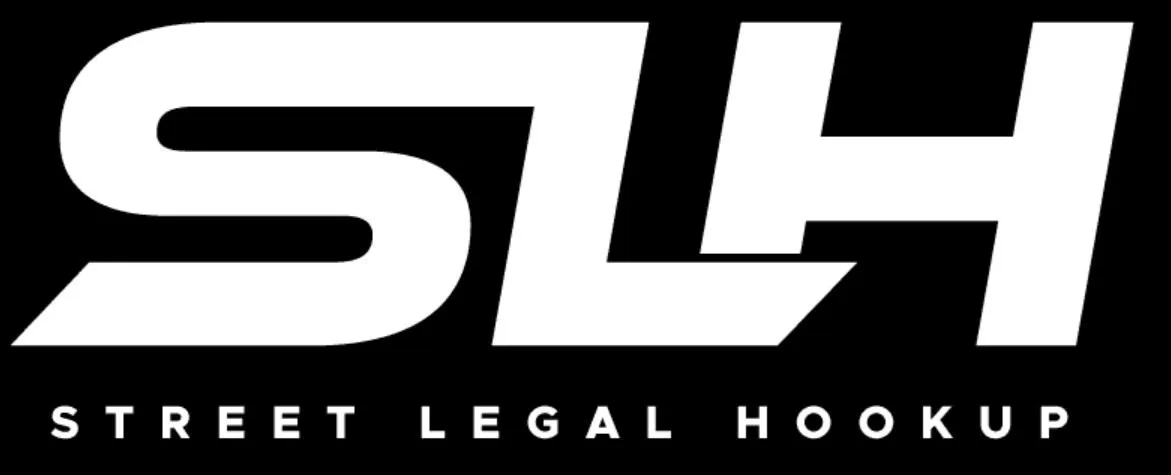In 2025, California recorded over 50,000 Utility Terrain Vehicles (UTVs) registered, showing their popularity among off-road enthusiasts. Many owners want to drive their UTVs on public roads to reach trails or handle tasks in rural areas. However, California’s strict regulations, high taxes, and complex paperwork make this process challenging.
The California Department of Motor Vehicles sets specific rules for street-legal UTVs. This guide explains the steps, challenges, and options to legally operate your UTV on California streets. It provides clear instructions to help you achieve compliance while managing costs.
Key Takeaways
- Equip your UTV with required safety features for street use.
- Navigate the California DMV registration process.
- Use a Montana LLC to save thousands on taxes and fees.
- Secure a title for your UTV, even without existing paperwork.
- Meet insurance and other legal requirements for compliance.
UTVs and California Street-Legal Standards
Utility Terrain Vehicles (UTVs) are four-wheeled vehicles with side-by-side seating, built for off-road use. Popular models include the Polaris RZR and Can-Am Maverick. UTVs differ from Off-Highway Vehicles (OHVs), which carry a California OHV regulations green sticker for trail use. They also differ from Recreational Off-Highway Vehicles (ROVs), Low-Speed Vehicles (LSVs), and Neighborhood Electric Vehicles (NEVs). Most UTVs, like the Can-Am Maverick, lack safety equipment and emissions compliance for street use straight from the factory, making them ineligible for public roads without changes.
Driving a UTV on city streets or highways in California expands its use. For example, you can drive to trailheads or run errands in rural areas. A street-legal UTV can travel on roads with speed limits up to 35 mph, based on local rules. Unlike OHVs, which are restricted to trails, street-legal UTVs need a UTV registration and full registration. The California UTV laws outlined in the California Vehicle Code (CVC) set strict standards, including safety equipment and emissions rules. Understanding these requirements is the first step to compliance.
Equipment and Legal Requirements for Street Use
To drive a UTV on California’s public roads, it must meet DMV and CVC standards, covering safety equipment, legal documents, and emissions.
Documentation for Compliance
To register a side-by-side for street use, you must verify the Vehicle Identification Number (VIN) to confirm the UTV’s identity and ensure it’s not stolen. Visit a DMV office or an authorized verifier for this step. Your UTV must also meet Federal Motor Vehicle Safety Standards (FMVSS), covering crash safety and equipment for on-road use. You need a valid California driver’s license to operate a street-legal UTV.
For OHVs transitioning to street-legal status, California requires upgrades beyond the green sticker used for off-road trails. These upgrades ensure the vehicle meets on-road safety and registration rules.
Mandatory Safety Features
To comply with street-legal UTV requirements in California, your UTV needs specific safety equipment:
- Headlamps: One white headlamp for nighttime visibility. Dual headlamps improve lighting.
- Taillamps and Stop Lamps: Red taillamps and brake-activated stop lamps for visibility.
- Turn Signals: Amber front and red rear signals to show turns.
- Rearview Mirrors: One driver’s side mirror. Two mirrors are better for full visibility.
- Windshield: A safety-glass windshield or polycarbonate alternative to block debris.
- Seat Belts: Three-point seat belts for all passengers.
- Roll Cage: A sturdy roll cage meeting FMVSS to protect during rollovers.
- Brakes: Reliable brakes that meet CVC standards.
- Horn: An audible horn to alert others.
These features make high-performance UTVs, like the Polaris RZR 1000 Turbo with a top speed of 85 mph or a standard RZR reaching 70 mph, safe for roads. California does not require helmets for street-legal UTVs with a roll cage and seat belts, as these meet CVC safety standards. However, cities like San Diego or Sacramento may have extra rules. Check with local authorities to confirm.
Emissions Compliance Challenges
California’s emissions rules are strict. Most UTVs are built for off-road use and don’t meet on-road emissions standards, which is why models like the Can-Am Maverick are not street-legal without changes. Aftermarket emissions kits can help but are costly and may not guarantee compliance. The SB100 exemption in California lets some low-emission or specialty vehicles skip emissions rules, but UTVs rarely qualify due to their off-road design. Check with the DMV to confirm eligibility. Non-compliance can block registration.
DMV Registration Process for UTVs
Registering a side-by-side for street use through the California DMV involves several steps, each with potential challenges:
- Verify VIN: Book a DMV appointment or visit an authorized verifier to confirm your UTV’s VIN, ensuring it matches your documents.
- Complete REG 343 Form: Fill out the Application for Title or Registration (REG 343). Include details like make, model, and VIN. Accuracy prevents delays.
- Provide Certificate of Title: Submit proof of ownership, such as a manufacturer’s certificate or existing title. If your UTV lacks a title, like with custom or used models, you need extra documents like a bill of sale, complicating the California UTV title process.
- Pay Fees: Registration fees range from $200 to $500. Sales tax adds 7-10% of the UTV’s value, often $1,000-$3,000. Emissions or VIN verification may add costs.
- Get License Plate: After approval, the DMV issues a California DMV UTV registration license plate for road use.
This process can take weeks. DMV wait times are long, and paperwork errors cause delays. Missing titles, common with models like the Yamaha Wolverine, make things harder. High taxes and emissions rules increase costs. Even reliable UTVs, like the Honda Pioneer known for few mechanical issues, face these bureaucratic hurdles.
Montana LLC Registration Alternative
California’s DMV process is costly and complex. Street Legal Hookup offers a Montana LLC registration method, a legal approach that simplifies UTV registration in California and cuts costs for models like the Can-Am Maverick or Polaris RZR.
Benefits of Montana LLC Registration
Montana has no sales tax, emissions tests, or mandatory inspections for LLC-registered vehicles, making it a great option. Benefits include:
- Cost Savings: Skip California’s 7-10% sales tax and high fees, saving $5,000-$15,000. A $30,000 UTV could save $2,100-$3,000 in taxes.
- Permanent Plates: UTVs over 11 years old get permanent plates, eliminating annual renewals.
- No Emissions or Inspections: Montana skips smog checks and safety inspections, avoiding California’s emissions challenges.
- Fast Processing: Get plates in 3 days. Temporary 40-day tags are available in 1 day.
This method works for high-performance UTVs like the Polaris RZR 1000 Turbo, which reaches 85 mph, or standard RZRs at 70 mph, avoiding costly emissions fixes. Consider Montana LLC registration to save on UTV street-legal California costs while staying compliant.
Registration Steps
The Montana LLC process is simple:
- Pay Flat Fee: The service costs $995, covering all steps.
- Submit Information Online: Provide vehicle details like make, model, and VIN. Sign documents on a secure platform.
- Mail Documents: Send your title or bill of sale. For UTVs without a title, title recovery services fix issues like missing paperwork or liens.
- Receive Plates: The process handles LLC formation, Montana DMV paperwork, and plate delivery.
- Legal Considerations: Montana LLC registration is legal, but California may scrutinize vehicles used or stored in-state. Use taxes, matching sales tax, could apply. For a $30,000 UTV, this might mean $2,100-$3,000. Consult a tax professional, especially in high-tax areas like Los Angeles. Street Legal Hookup guides you to ensure compliance.
Additional Requirements for Street Use
Beyond equipment and registration, you need to meet other requirements to drive a UTV on California’s roads.
Liability Insurance
California requires liability insurance to register a side-by-side for street use. Get a policy in your name, listing the Montana LLC, if used, as an additional interest, not a commercial policy. This covers accidents or damages on roads, meeting UTV insurance California rules. Costs vary by UTV value and usage. A $20,000 UTV might cost $300-$800 yearly. Compare quotes from insurers familiar with off-road vehicles.
Nonresident OHV Use Permit
Nonresidents or those using a UTV temporarily in California can get a Nonresident OHV Use Permit, costing about $30 yearly. It allows off-road use on trails but not on city streets or highways. This suits owners who don’t need street-legal status. Confirm your needs with the DMV.
Title Acquisition
A title is essential for registration. Use a manufacturer’s certificate or existing title for a simple process. For UTVs without a title, like custom or imported models, you need a bill of sale or other proof. Street Legal Hookup’s title recovery service simplifies this, resolving missing paperwork or liens, streamlining the California UTV title process.
Start Your Hassle-Free UTV Registration Today with Street Legal Hookup
Choosing Street Legal Hookup for your UTV registration simplifies the process and maximizes savings, making it the smartest way to get your side-by-side street-legal in California. Our Montana LLC registration service eliminates California’s costly fees and complex requirements, offering unmatched convenience and value. Here’s why thousands of UTV owners trust us:
- No Sales Tax: Save thousands with Montana’s zero vehicle sales tax. For a $50,000 UTV, skip California’s $3,500-$5,000 tax.
- No Emissions or Inspections: Avoid California’s safety inspections and emissions tests, which can cost $100 to $2,500 and delay registration.
- Permanent Plates: Get one-time permanent plates for eligible UTVs 11 years or older, cutting ongoing costs compared to California’s yearly fees.
- Fast, Hassle-Free Service: Complete your registration in 3 business days. Our secure online platform lets you upload documents easily, and our expert team handles LLC formation and DMV paperwork.
- Cost-Effective Flat Fee: For a $995 fee, unlock savings of $5,000 to $15,000 compared to California’s taxes and fees.
- Trusted Expertise: We specialize in UTVs and have helped thousands comply with California UTV laws.
California rules are different from other states. Want to know how to make a UTV street legal in Florida? Our dedicated guide breaks down California-specific requirements step by step.
Frequently Asked Questions
Can you make a side-by-side street legal in California?
Yes, side-by-sides can meet CVC requirements with safety equipment and DMV registration. Montana LLC registration avoids emissions tests and taxes.
Does California require UTV insurance?
Yes, liability insurance is needed for street-legal UTVs. Get a policy in your name, listing the Montana LLC, if used, as an additional interest. Check with insurers for quotes.
Do you have to wear a helmet on a UTV in California?
No, helmets are not required for street-legal UTVs with a roll cage and seat belts. Check local rules for extra requirements.
How can I get a title for a side-by-side?
Submit proof of ownership, like a bill of sale, and complete the DMV’s REG 343 form. Street Legal Hookup’s title recovery service handles complex cases.
Street-Ready and Registered: What Comes Next?
To make a UTV street-legal in California, you need the right UTV equipment requirements, a valid title, and proper registration. The DMV process involves safety equipment like headlamps and seat belts, VIN verification, and fees of $200-$500 plus taxes of $1,000-$3,000. Emissions rules and paperwork can delay things for weeks.
Street Legal Hookup’s Montana LLC registration saves $5,000-$15,000 by avoiding taxes and inspections. It delivers plates in as little as 3 days. For a simple, cost-effective solution, start your UTV registration today.


